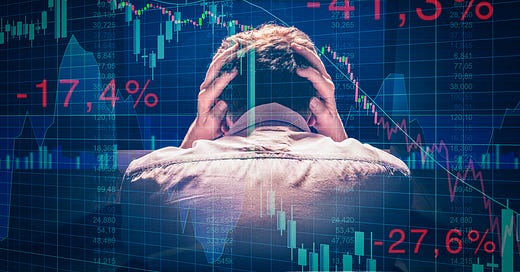3 Trading Psychology Traps That Professionals Need To Avoid
3 minute read
The financial industry, and especially trading as a profession, is built on the premise of making decisions without knowing the outcome of those decisions. We do our best to be right more often than wrong because losses are permanent. That’s why professionals focus on honing their trading brains and work daily to overcome their biases and rely on pre-established rules for risk management and money management as detailed in their trading plan.
Understanding Trading Psychology
Some of the greatest risks we face as professionals come from within: how we react in response to the market that causes a loss or missed trading opportunity. Even if you have been a financial professional for decades, you still may not be aware of the invisible psychological traps that affect how we trade.
Becoming aware of the three trading psychology traps below is the first step toward improving. The next step involves creating a plan to overcome these traps in real-time by learning to trade like a pro.
3 Trading Psychology Traps That Professionals Need To Avoid
1. The Anchoring Bias Trap
Anchoring refers to an over-reliance on a reference point in the past. Imagine choosing a stock purely because you look around and see its products everywhere. After all, they must be successful if they’ve captured so much of the market share; its stocks must be a good bet.
This preconception may be incorrect. Think Sears. Or Radio Shack. Or any chain that was crushed by retailers such as Amazon. Those anchored in the trap that Sears was here to stay lost money as the company spun off assets, cut staff, and eventually filed for bankruptcy.
Sears Holdings - Stock Price History | SHLDQ
An anchoring bias can cause a lot of problems. Professionals know that financial markets are very unpredictable and that they need to remain flexible and rely on data rather than personal beliefs about the market.
2. Confirmation Bias Trap
Confirmation bias is when investors take a position in the market and then focus only on the technical indicators that confirm their existing beliefs. Doing so results in biased decision-making as an investor will filter out any information that goes against their beliefs.
Professionals know that the way out of the confirmation bias trap is to:
understand that humans by nature tend to interpret information that supports one’s prior beliefs
verify information before acting on it
seek alternative ideas that challenge their point of view.
3. Herding
Herding is where investors follow what they believe or perceive other investors are doing, rather than their analysis. Herding behaviour is what creates large volume in certain stocks or sectors and is the primary reason for ‘bubbles” in financial markets. Professionals understand that following the crowd is not always the right move. A professional makes a conscious effort to perform their own analysis and research on every investment decision and avoids the temptation to follow the majority.
The Bottom Line
It is never easy to try to avoid or overcome something which is psychologically hardwired into us. It is very easy in the heat of the moment to fall into one of the psychological traps listed above. The best way to mitigate these effects is to stay open to new information and ensure your trading decisions are rooted in a rule-based process that identifies the risk and calculates the probability before taking the trade.





